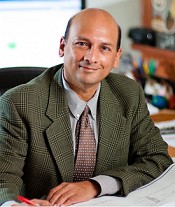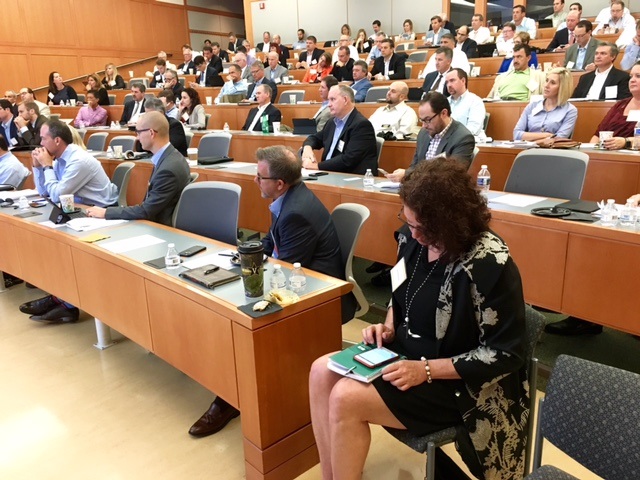Grainy security camera footage of an empty waiting room captures the chilling devastation of the May 22, 2011, EF-5 tornado that struck St. John’s Mercy Hospital in Joplin, Mo.
It is eerily still for nearly a minute, the only movement an unseen current rustling a magazine’s pages. At 57 seconds, the tornado hits at full strength, decimating the room in an instant. By the next day, an iconic photo of Mercy’s crumpled red medical helicopter lying on its side made its viral way to computer screens around the globe. Five patients and a visitor to the hospital were dead, along with 156 other victims in Joplin.

The story of how Mercy rebuilt from that tragedy mesmerized a packed Jacobs Believed in Me Auditorium on Aug. 3. Facility designers, project managers, construction engineers, architects, contractors – representatives of virtually every profession involved in building medical facilities – gathered for the 10th Annual Healthcare Design and Construction Symposium. On its first night, they listened to this special presentation from the Mercy team for keys to how to navigate such a tragedy.
The symposium, presented at Vanderbilt University School of Engineering, was titled “Continuing the Conversation: Reducing Stress in Healthcare Projects.” It was tough to imagine ways to reduce stress while designing and building a 600,000-square-foot hospital from the ground up in four years, said John R. Farnen, vice president of planning, design and construction for Mercy.
“There was a big push to get this done, not only from the community, because they needed it, but because of the CEO,” he said. He described planning the building while already constructing it, resulting in having to lower the basement by 4 feet, for example, when architects learned the mechanical systems couldn’t fit into the one they initially designed.
Symposium organizer Sanjiv Gokhale, professor of the practice of civil engineering and director of graduate studies in construction management, said he was thrilled with the standing-room-only crowd for the two-day event.

“It’s really a journey that started 10 years ago in a single classroom with about 35 people,” Gokhale said. “We had some presentations, it was barely a day long, but that’s the seed that was planted. We’ve been told time and time again by people who attend this how much they take away and can go back and apply in their organizations. That’s our mandate as an educational institution.
“This event is concise and direct with no vendors or sales — a dialog with everybody learning from each other. What more important thing can we do than build hospitals that truly take care of people?”
The lessons from the Joplin team included:
- Have a seat at the table for everyone involved, with transparent communication and a face-to-face meeting for all stakeholders every week. Co-locate in one large office.
- Empower the core team and break down silos. Set up a shared Building Information Modeling (BIM) file.
- Use real-time estimating.
- Give and be open to constructive criticism.
Other speakers included Hospital Corporation of America CEO R. Milton Johnson, who presented “C Suite Agenda: Where it starts and stops,” and McKinsey & Company Senior Partner Kurt Grote, also trained as a medical doctor, who presented, “National Healthcare Trends Producing Stress Points Now and in the Future.” Grote competed in the 1996 Summer Olympics, winning a gold medal as a member of the U.S. team in the men’s 100-meter medley relay.
Representatives on the program from academic, for-profit and not-for-profit healthcare systems included Kevin Mahoney, executive vice president and CAO, University of Pennsylvania Health System; Greg Mohler, vice president of planning, design and construction, BJC HealthCare; Joe Stasney, project director, Kaiser Permanente; and Dean Tiratto, senior director for project management, Community Health Systems.
In all, the organizations on the program were responsible for a total of more than $5 billion in capital programs in 2015.

Contact
Heidi Hall, 615-322-6614
Heidi.Hall@Vanderbilt.edu
On Twitter @VUEngineering